What is Blockchain Technology? A Beginner’s Guide
Blockchain technology has become one of the most revolutionary and transformative technologies in recent years, redefining the way we think about data security, transparency, and decentralized systems. Created to support digital currencies like Bitcoin, blockchain has expanded into various sectors, from finance and healthcare to supply chain management and government services. This guide provides a comprehensive overview of blockchain technology, breaking down its core concepts, benefits, and potential applications.
1. Introduction to Blockchain Technology
Blockchain is a decentralized digital ledger that records transactions across a network of computers. Unlike traditional databases managed by a single entity, blockchain operates in a decentralized environment where every participant (node) in the network maintains a copy of the ledger. This unique structure ensures data transparency, security, and immutability.
The term “blockchain” comes from its structure—data is stored in “blocks” that are linked together in a “chain.” Each block contains a list of transactions, a timestamp, and a reference to the previous block, forming a chronological chain of records. Once a block is added to the chain, it is nearly impossible to alter or delete the information, making blockchain an ideal solution for secure and transparent data management.
2. How Does Blockchain Work?
To understand blockchain technology, it’s essential to grasp how it works. Here is a step-by-step breakdown of the blockchain process:
Step 1: Transaction Initiation
When a user initiates a transaction (such as transferring digital currency or data), the transaction details, including the sender, receiver, and amount, are encrypted and broadcast to the network.
Step 2: Transaction Verification
The transaction is then verified by nodes in the network using a consensus algorithm. Common consensus mechanisms include Proof of Work (PoW), Proof of Stake (PoS), and Delegated Proof of Stake (DPoS). These algorithms ensure that only legitimate transactions are added to the blockchain.
Step 3: Creation of a New Block
Once verified, the transaction is grouped with other verified transactions to form a new block. Each block contains a cryptographic hash of the previous block, ensuring that they are linked together in a sequence.
Step 4: Adding the Block to the Blockchain
The new block is added to the existing blockchain, forming a permanent and unalterable record. The updated blockchain is then shared across the entire network, ensuring transparency and security.
Step 5: Completion of the Transaction
The transaction is now complete, and the updated blockchain ledger is stored on every node in the network. This distributed nature of the blockchain ensures that no single entity has control over the entire network.
3. Key Features of Blockchain Technology
Several key features make blockchain a revolutionary technology. Understanding these features helps illustrate why blockchain is so valuable in today’s digital age.
3.1. Decentralization
Traditional databases rely on a single entity for management and control. In contrast, blockchain technology distributes control across a decentralized network, eliminating the need for a central authority. Every participant (node) has a copy of the entire blockchain, making it more resilient to attacks and failures.
3.2. Transparency
One of the most significant advantages of blockchain technology is its transparency. The network records all transactions on a public ledger, allowing anyone with access to view them.
This transparency fosters trust among participants and reduces the likelihood of fraud and manipulation.
3.3. Immutability
After the network adds a block to the blockchain, no one can easily alter or delete the information it contains. This immutability ensures data integrity and security, making blockchain ideal for applications where trust and data authenticity are crucial.
3.4. Security
Blockchain uses advanced cryptographic techniques to secure data. Blockchain encrypts transactions, and each block carries a unique hash that links.
3.5. Consensus Mechanisms
To add a new block to the blockchain, the network must reach a consensus. Consensus mechanisms like Proof of Work (PoW), Proof of Stake (PoS), and others ensure that all nodes validate transactions before adding them to the blockchain.
4. Types of Blockchains
Blockchain technology can be classified into different types based on the level of accessibility and decentralization:
4.1. Public Blockchain
A public blockchain is open to anyone, and anyone can participate in the network, validate transactions, and create new blocks. Bitcoin and Ethereum are examples of public blockchains. Public blockchains operate in a highly decentralized manner, providing strong transparency and security.
Here’s a comprehensive blog on “What is Blockchain Technology? A Beginner’s Guide” with a breakdown of the key concepts, features, and potential applications of blockchain technology.
What is Blockchain Technology? A Beginner’s Guide
Blockchain technology has become one of the most revolutionary and transformative technologies in recent years, redefining the way we think about data security, transparency, and decentralized systems. Created to support digital currencies like Bitcoin, blockchain has expanded into various sectors, from finance and healthcare to supply chain management and government services. This guide provides a comprehensive overview of blockchain technology, breaking down its core concepts, benefits, and potential applications.
1. Introduction to Blockchain Technology
Blockchain is a decentralized digital ledger that records transactions across a network of computers. Unlike traditional databases managed by a single entity, blockchain operates in a decentralized environment where every participant (node) in the network maintains a copy of the ledger. This unique structure ensures data transparency, security, and immutability.
The term “blockchain” comes from its structure: it stores data in “blocks” that link together to form a “chain.” Each block contains a list of transactions, a timestamp, and a reference to the previous block, forming a chronological chain of records. After adding a block to the chain, altering or deleting its information becomes nearly impossible, making blockchain an ideal solution for secure and transparent data management.
2. How Does Blockchain Work?
To understand blockchain technology, it’s essential to grasp how it works. Here is a step-by-step breakdown of the blockchain process:
Step 1: Transaction Initiation
When a user initiates a transaction, such as transferring digital currency or data, the network encrypts the transaction details, including the sender, receiver, and amount, and broadcasts them to all nodes.
Step 2: Transaction Verification
The transaction is then verified by nodes in the network using a consensus algorithm. Common consensus mechanisms include Proof of Work (PoW), Proof of Stake (PoS), and Delegated Proof of Stake (DPoS). These algorithms verify transactions and add only the legitimate ones to the blockchain.
Step 3: Creation of a New Block
After verification, the network groups the transactions with others to form a new block. Each block includes a cryptographic hash of the previous block, linking them together in a secure sequence.
Step 4: Adding the Block to the Blockchain
The network adds the new block to the existing blockchain, creating a permanent and unalterable record. It then shares the updated blockchain across all nodes, ensuring transparency and security.
Step 5: Completion of the Transaction
The network completes the transaction and stores the updated blockchain ledger on every node. This distributed nature of the blockchain ensures that no single entity has control over the entire network.
3. Key Features of Blockchain Technology
Several key features make blockchain a revolutionary technology. Understanding these features helps illustrate why blockchain is so valuable in today’s digital age.
3.1. Decentralization
Traditional databases rely on a single entity for management, whereas blockchain distributes control across a decentralized network with no central authority. Every participant (node) has a copy of the entire blockchain, making it more resilient to attacks and failures.
3.2. Transparency
One of the most significant advantages of blockchain technology is its transparency.The network records all transactions on a public ledger, allowing anyone with access to view them. This transparency fosters trust among participants and reduces the likelihood of fraud and manipulation.
3.3. Immutability
After the network adds a block to the blockchain, altering or deleting its information becomes nearly impossible.This immutability ensures data integrity and security, making blockchain ideal for applications where trust and data authenticity are crucial.
3.4. Security
Blockchain uses advanced cryptographic techniques to secure data. The network encrypts transactions, and each block carries a unique hash linking it to the previous one, making it extremely difficult for hackers to manipulate the data undetected.
3.5. Consensus Mechanisms
To add a new block to the blockchain, the network must reach a consensus. Consensus mechanisms like Proof of Work (PoW), Proof of Stake (PoS), and others ensure that all nodes validate transactions before adding them to the blockchain.
4. Types of Blockchains
Blockchain technology can be classified into different types based on the level of accessibility and decentralization:
4.1. Public Blockchain
A public blockchain is open to anyone, and anyone can participate in the network, validate transactions, and create new blocks. Bitcoin and Ethereum are examples of public blockchains. Public blockchains operate in a highly decentralized way, providing strong transparency and security.
4.2. Private Blockchain
A private blockchain is a closed network where only authorized participants can access the blockchain. Organizations typically use these blockchains for internal purposes. Private blockchains offer more control and faster transaction speeds but are less decentralized.
4.3. Consortium Blockchain
A consortium blockchain is a hybrid of public and private blockchains, where a group of organizations manages the blockchain network. It operates in a partially decentralized manner, with only a pre-selected group of nodes authorized to validate transactions and create new blocks.
4.4. Hybrid Blockchain
Hybrid blockchains combine the features of both public and private blockchains. They offer controlled access, where certain data is public while other data remains private. Hybrid blockchains are suitable for applications that require both transparency and privacy.
Outgoing Social Links (Brand Signals)
- Pinterest: https://www.pinterest.com/petsaaltechnologies/
- LinkedIn: https://www.linkedin.com/company/petsaal-technologies/
- Instagram: https://www.instagram.com/petsaaltech/
- Facebook: https://www.facebook.com/petsaaltechnologies
- X (Twitter): https://x.com/petsaaltech




